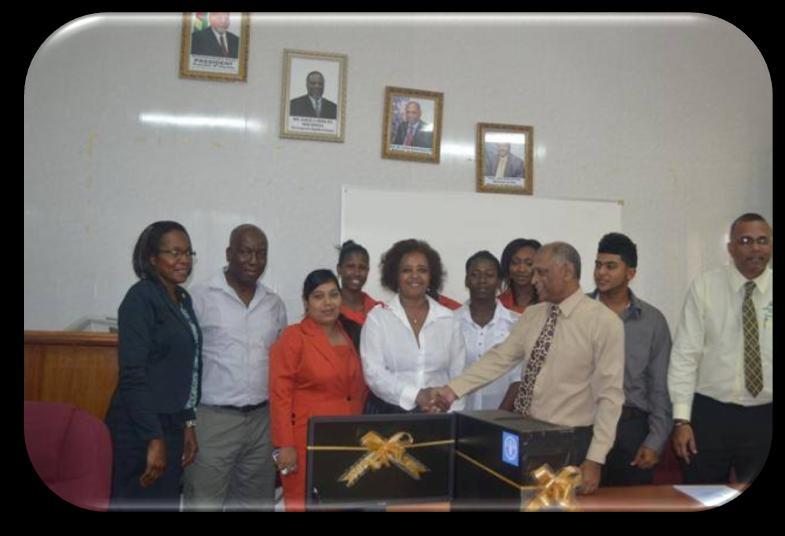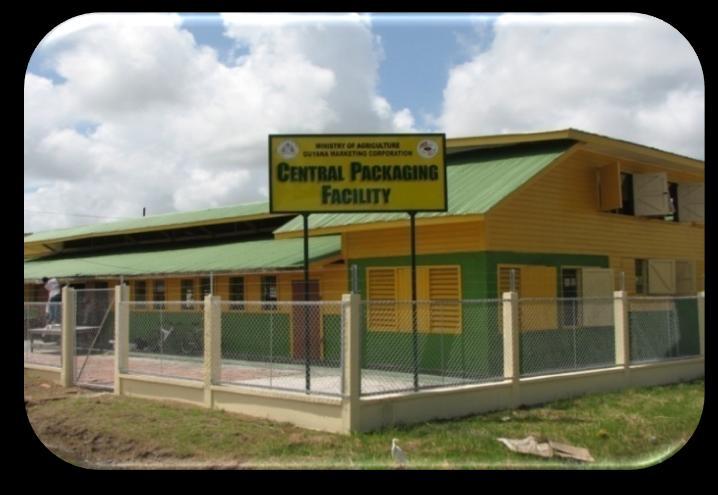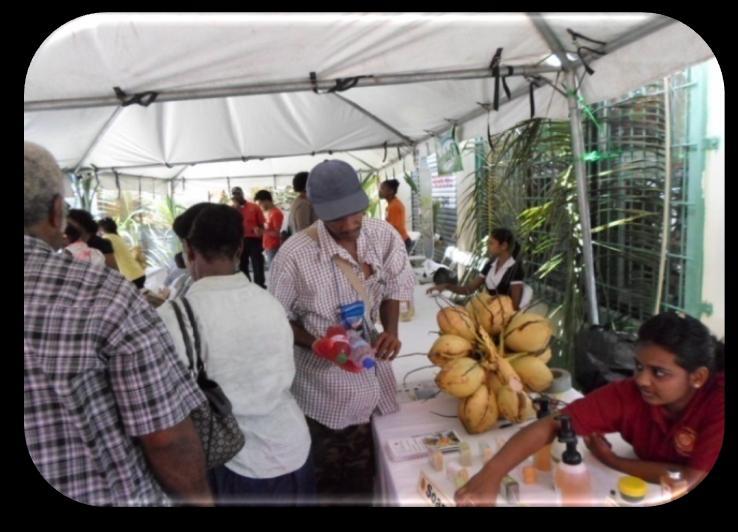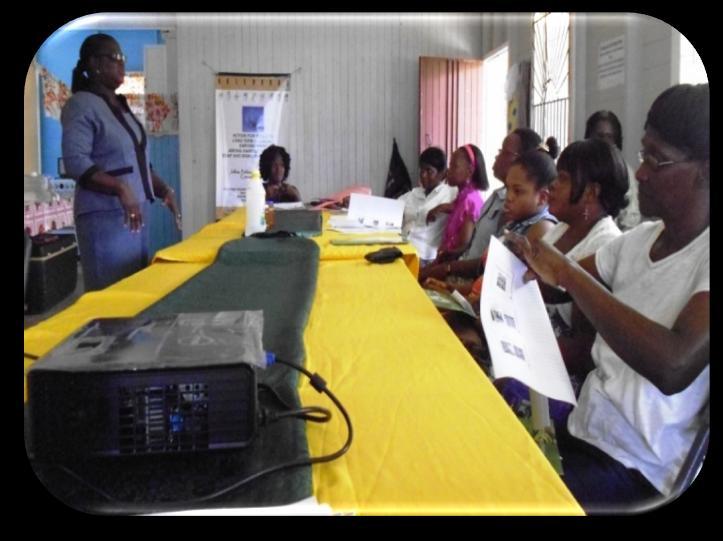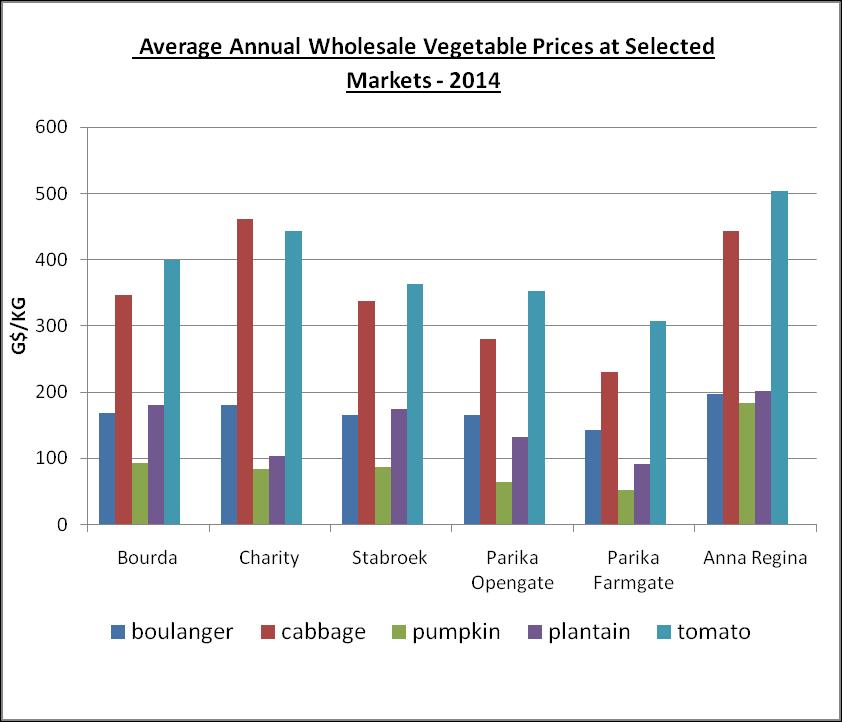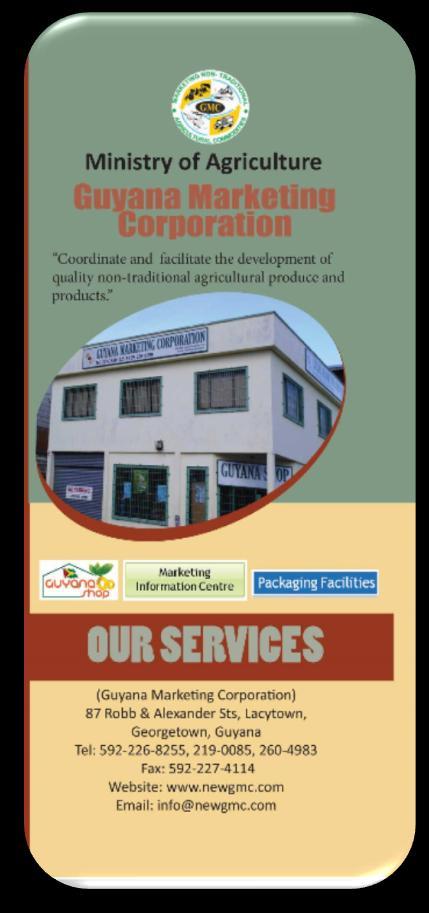
3 minute read
Executive Summary
In 2014, the Guyana Marketing Corporation worked assiduously to coordinate and facilitate the development and marketing of quality non-traditional agricultural produce and products. The corporation‟s activities were tailored to achieve the strategic objectives outlined in the National Agriculture Strategy 2013 - 2020, the Services Agreement and GMC‟s Strategic Plan.
In so doing, there was specific focus on the promotion of the consumption of locally manufactured commodities. The corporation, through its Guyana Shop was able to host several promotional events at its Robb Street Location. The Guyana Shop was also launched in Regions 2 and 6, in a bid to ensure that locally produced commodities are available across the country. Additionally, there was the first ever Agroprocessors Forum which is slated to be an Annual Event. This activity was used as the basis for commencing the development of a road map for the agro-processing industry.
As the corporation continued to promote the use of local commodities, there were several other promotional activities such as the Agro-Processors Fair and the Agri-business Fair. The corporation also made representation at national and international trade fairs and exhibitions throughout the country such as Linden Expo, Essequibo Nights, Berbice Expo, International Food and Drinks Festival and Caribbean Week of Agriculture.
Export Promotion is also a key function of the Guyana Marketing Corporation. So much so, the corporation has been directly involved in facilitating and promoting the export of both fresh and processed commodities through the creation of market linkages. In 2014, non-traditional exports totaled 13,922 MT valued at G$1.9 Billion or US$9.5 Million, representing a 10% increase from the 12,701 MT exported in 2013.
The GMC also continued to facilitate the packaging of produce for export through the provision of its two packaging facilities to exporters. In 2014, there were 360 MT of produce prepared at the Central Packaging Facility (CPF) while 226 MT of produce were prepared at the Parika Agro Packaging Facility (PAPF).
Additionally, the Marketing Information Centre maintained its export brokerage service and prepared three hundred and sixty eight (368) export documents. The centre also continued to facilitate the completion of the US Food and Drug Department Registration for exporters desirous of sending food products to the
USA. These activities were executed under the corporation‟s directive to facilitate and promote the export of non- traditional commodities.
The Market Extension function of GMC was improved significantly as the corporation sought to improve its coverage across the country. Market Extension Services were provided to farmers and agro-processors in various regions such as Regions 1, 2, 3, 4, 5 and 6. More importantly, the officers at GMC were able to create several linkages between farmers and buyers. Notably, several pumpkin, plantain, watermelon and coconut famers were linked with exporters.
As it relates to Agri-business development, there was extensive work done with agro-processors to aid in the acquisition of FDD approvals, improvement in packaging and labels and capacity building, in the form of training sessions. GMC also functioned as a platform for Agro-processors to interact with local packaging companies and other key stakeholders.
During the year it was observed that there was need for raising awareness of the services offered by GMC. To this end, there were several awareness activities held in various areas which aimed to educate farmers about the functions of the corporation. In a bid to ensure that market and marketing information is easily accessible to the public, GMC continued to improve the structure of its Market information System. . Stakeholders are now able to access information through several means such as email, test messaging, phone calls, visits and GMC‟s website.
Nizam Hassan

